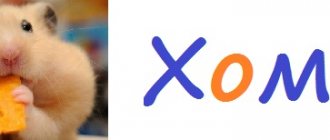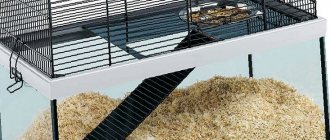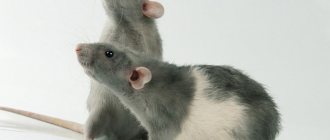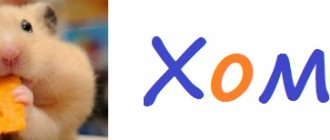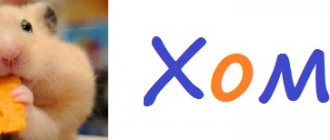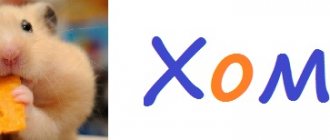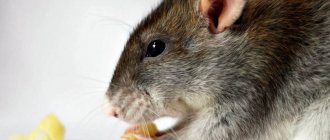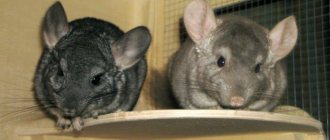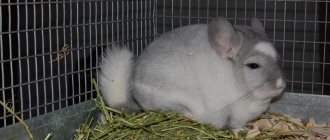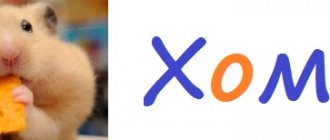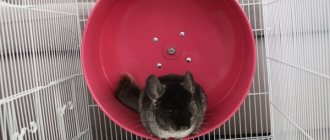In this century, people keep many different types of animals as pets. There was a time when dogs, cats and a few other animals were the only pet options people had. However, now you can meet the owners of rats and other exotic animals. Although rodents are small in size, they are very smart and cheerful.
Every owner of a pet rat wants to spend more time with it. To do this, you need to find a safe and reliable way for the animal to move freely in your company. Harnesses and leashes can help your pet travel with you or simply play freely.
What is a harness for?
Small animals are usually kept in cages. However, sometimes they will definitely want to get out of the cage and explore their surroundings better. If you have a rat as a pet, you should purchase a harness. She will allow the animal to roam outside the cage. With a harness and leash, you can easily let your pet roam around the room without worrying about losing a rat in a small space.
Rats are quite intelligent animals, and teaching them to perform some neat tricks is not a difficult task. Rat harnesses will also prevent your rat from escaping when you try to train it or even pet it. Once your rat is used to the harness and can walk normally on a leash, you can even try taking him out of the cage to explore your room on his own.
You can also walk your rat outside using a harness or leash, but many rodents will not respond well to a leash or going outside. If you do decide to walk your rat, make sure you have a tight-fitting harness and elastic leash, and be extremely careful when walking. Perhaps the best and less stressful way to take your rat with you is to use a rat carrier, which will keep your pet safe and give you peace of mind.
Results
A rat on a leash looks interesting and elegant. You need to accustom her to such walks first indoors, then in deserted places outdoors. Until you are completely sure that the rat feels good in a harness, you should not go for a walk with it in the park. Even in this case, you need to be careful so that other animals do not attack your pet, or that it does not fall under the wheels of a bicycle or car. It is necessary to ensure that all locks on the harness are securely fastened.
How to choose the right rat harness
Choosing a good rat harness is not an easy task. When making a choice, you must take into account certain factors and features. It is best to avoid collars. It will be very easy for a small pet to slip out of such a device. Even if you are able to purchase a quality collar that your pet cannot escape from, it can still pose a serious choking hazard. This is why you should always choose a harness that distributes pressure evenly across your entire chest.
It is also important to make sure that the harness you choose fits your pet comfortably. It should be loose enough to allow the rat to move freely, but tight enough to prevent the animal from escaping. Obviously, you won't find a harness specifically designed for rats. There's nothing to worry about here. Just look for those harnesses that fall into the small animal category.
Chew toys
When pet rats get bored, they start chewing on something. To prevent them from chewing on your furniture, blankets and carpets, make your own chew toys for them.
- Walnuts in shell. The hard shell will not allow you to quickly eat the nuts and will occupy the teeth of rodents.
- Boiled chicken or beef bones.
- Wooden chew toys (not pine ones). You can buy such toys at a pet store, or you can cut disposable wooden sticks yourself. A popsicle stick works well, or you can even leave a little of the treat on it. Your tailed friends will thank you for this.
- Dog biscuits are hard, low in protein and fat.
- Baby crackers for teething.
- Wine corks.
- Cardboard boxes are a convenient house and a chewing toy in one.
Rat teeth are constantly growing, so they simply need to constantly chew on something to wear them down. To prevent your pets from chewing everything, offer them chewing toys.
Main varieties
There are 3 main types of harnesses. However, you can buy a collar, but it can put pressure on the rat’s neck. Therefore, you should choose from the following types of accessories:
- Figure 8 Harness - This type of harness has two loops, one going behind the front legs and the other going around the neck. The device is attached at the junction of two loops at the withers (the base of the neck above the shoulders).
- H-shaped harness – This accessory has two loops, like a figure eight. But the loops are not connected directly; they are connected by a separate piece of material, such as a nylon strap.
- A harness vest is a fitted fabric vest that fastens around the neck and belly with Velcro, buttons or zippers and has a ring at the back for attaching a leash.
If you don't want to buy a harness, you can make your own.
In the form of a pipe
A very popular option. To make such a model you will need thick fabric. Cut out 2 rectangles of the same size. We fold the edges of the rectangles, align them and stitch them.
Next we sew the 2 long side parts together. You will get something like a tube, turn it so that the seam is on top, and make a round cutout. It must be processed using a thin cloth. 2 belts can be used as holders; they are sewn to the fabric and attached to the cage.
It is possible to slightly supplement such a pipe. To do this, take a rectangular fabric, take the sizes a little smaller. We fold the rectangle and stitch it on one side, then we connect the part on one side of the pipe. An additional pocket comes out; it is secured at the corners with the help of paper clips and to the cage.
Necessary materials
The simplest variety to make yourself is a figure eight shaped harness. In order to make it, you only need one rope. It should be long enough, so it should be used for the area around the neck and body. Therefore, its length should be at least 20cm. Any material will do. However, it is important to avoid rough abrasive ropes, which can irritate your rat's skin.
To create an H-shaped harness, you will need three nylon collars for small pets. You can buy adjustable collars for less than RUB 150 each. You will need three different sizes:
- A collar that fits the rat's neck.
- One that will hug her chest just behind her front paws.
- A long collar that will be used as a connecting element.
To create a vest harness you will need high-quality elastic fabric and a metal ring. You can use special fabric for animals, but regular fleece or cotton fabric will do just fine.
Various product options
Trying to ensure maximum convenience and safety, caring breeders have come up with several options for long leashes, dividing them according to their intended purpose. Therefore, the following types are distinguished:
for walks. These harnesses are available for small breeds such as Dachshund, Spitz, etc., and for large breeds;- for sledding and towing;
- leashes with weights (weights), which are used to train and maintain the physical shape of the dog;
- created for auxiliary medical purposes, the task of which is to relieve the stress from the pet’s limbs as much as possible;
- for puppies up to 6 months, preventing paw dislocations and promoting the development of the animal's pectoral muscles.
Also, these products are designed to take into account the individual characteristics of the age and breed of dogs, this is also taken into account in the form of leashes.
Therefore, according to their configuration, they are:
- H-shaped. They are two loops that fit over the head and front paws. A connecting strip is sewn between the loops.
- Reminiscent of 8. They are very similar to the previous ones except that they do not have a bar. This model is considered to be the safest as it prevents the dog from suffocating.
- Vests.
- V-shaped. They resemble the letter V on the dog’s back.
The variety of shapes will allow you to choose a shape for your pet that will not restrict his movements, put pressure on him or cause other inconveniences, while maintaining the maximum level of safety.
The process of creating a harness
To create a figure eight harness, follow these instructions:
- Fold the rope so that you have two unequal lengths: one about 15 cm and the other 2 cm.
- Wrap the center of the rope under the rat's neck.
- Cross the two sides of the rope behind the rat's back between its shoulders and pass the shorter part of the rope around the pet's chest just behind the paws and back up to meet the other side of the rope.
- Tie a knot where the two ropes intersect. This will allow you to adjust the harness when taking it on and off.
To make an H-shaped harness, repeat these steps:
- Remove the clasp from the long collar. Be sure to leave the leash ring intact so you have room to attach the harness.
- Measure the appropriate length of the connecting piece. Wrap the collars around the rat's neck and chest. Place the third collar along her back between her shoulder blades, with the leash ring in the middle, and mark the points where the third collar overlaps the far side of the other two collars.
- Sew loops on the ends of the connecting piece. Fold each end of the joining pieces just beyond the mark you made. Sew the folded ends together to form loops on each end.
- Thread the collar around your neck and chest through the loops to create an H-shaped harness. Once you pass the collars through the loops on the connector, your H-shaped harness is ready to use.
To create a harness vest, you will again need to measure the rat's neck, chest behind the legs and a few more centimeters on its torso. Then you can use stretch fabric.
- Cut the fabric to the desired size. You will need to leave some extra fabric for joining. If the vest is to be attached with Velcro or buttons, the two sides will need to completely overlap.
- Wrap the cut fabric around the rat and mark where its paws are.
- Cut out holes for the paws.
- Reinforce all edges of the fabric, including the paw holes, by folding the fabric and sewing it underneath.
- Attach Velcro, snaps, buttons or zippers.
- Sew a ring to the top of the vest between the rat's shoulders.
When can you use ammunition with weights?
The period when you can put on a weighted harness depends primarily on the breed of your pet and the nature of your training. Some people are advised to use weights from a year old, others - from a year and a half, and others - not earlier than two years. Therefore, before buying this harness and starting to use it, the owner must consult with an experienced trainer or at least a veterinarian, and then strictly follow all the recommendations received.
And most importantly, a do-it-yourself dog harness with a weight should be sewn by knowledgeable people, because a huge number of nuances should be taken into account, and if something is missed or not taken into account, then the health of your pet will suffer from one wrong step. You need to be very careful and competent in distributing the weight of the load. A cargo harness for dogs requires exclusively individual tailoring, specifically for your dog, in order to avoid big problems in the future. It is better to avoid sewing such a thing yourself if you have little experience.
How to put a harness on a rat
When you are trying to put a rat harness on your pet, the most important factor to keep in mind is your pet's comfort level. It is important that the animal feels calm when wearing the harness. If your rat shows any signs of anxiety while you are trying to put the accessory on it, stop what you are doing immediately. You can try to give your pet some positive associations with the harness, such as offering him treats when he sniffs the harness or when you try to put it on.
Once you are able to put the harness on, let your pet get used to it without fastening it or tightening it. The rat will need to spend some time with the harness to get used to the sensation the accessory has on its neck and shoulders. If you notice signs of anxiety in your rat, remove the harness and offer it a treat. Try again after a while.
Ratmaniya
Why do you need a walk?
Wild rats live in protected burrows or other types of shelters and search for food in nearby habitat. This dual structure of the living space largely determines the instincts of decorative rats and influences their behavior. Therefore, the need of rats for a daily walk is, on the one hand, a behavioral factor inherited from decorative rats from their wild ancestors, on the other hand, a physical need for movement, which is completely impossible in cage conditions, and a psychological need for new impressions and emotions. While a cage is a protected refuge for rats, a walk brings the necessary variety to a rat's life - it is their permanent habitat in which they can explore new things, frolic, play and fully communicate with their owner.
Recognized
FCI recognized breeds include:
- husky;
- Samoyeds;
- Alaskan Malamutes;
- Greenland sled;
- Chukotka sledding
Siberian Husky
Siberian Husky
The Siberian is medium in size, has a thick undercoat and dense coat. Its powerful frame allows it to easily transport small loads.
The Siberian Husky is not suitable for city life, as its restless nature and independence become the reasons for the destruction of the apartment.
Prices for puppies start from 20 thousand, reaching up to 50 thousand rubles, depending on the class.
Animals are characterized by:
- friendliness and complete lack of aggression towards people;
- cleanliness, keeping maintenance to a minimum;
- loyalty and gentle disposition.
The pet is prone to escape, so it always tries to undermine or break off the leash.
Samoyed husky
Samoyed husky
Samoyed huskies have 3 types of head structure:
- fox;
- wolfish;
- bearish.
According to their living conditions, they are similar to huskies, so they need long walks, a spacious enclosure or a large area of a private house that provides the opportunity for free walking.
Prices for puppies start from 10 thousand, reaching up to 35 thousand rubles, depending on the class.
Animals are characterized by:
- friendliness and complete lack of aggression towards people;
- playfulness, which allows you to maintain a childish disposition right up to gray hair;
- loyalty and gentle disposition.
Do not try to train your pet to be a watchdog. He lacks this skill.
Alaskan Malamute
Alaskan Malamute
Malamutes are among the largest representatives of the section. The parameters of an adult pet reach 64 cm and 43 kg.
Alaskan dogs are not suitable for workaholics, as they require constant attention and long periods of walking. Like other representatives of the breed, they should be kept in a private home, but some breeders can cope in apartment conditions.
Prices for puppies start from 12 thousand, reaching up to 30 thousand rubles, depending on the class.
Animals are characterized by:
- silence (the pet rarely makes a voice by barking);
- good nature and high intelligence, allowing you to easily get along with other pets and quickly remember new commands;
- stubbornness and leadership habits, causing difficulty in training for beginners.
The tendency to dig holes is determined by innate instincts inherited from the ancestors. Aboriginal dogs ate rodents, extracting them from underground.
Greenland sled
Greenland sled
Greenlanders are considered rare and ancient representatives of sled dogs. The age of the animal is estimated at many millennia, going back to the time before the advent of the new era. An adult animal reaches 32 kg in weight and 64 cm in height.
The average cost for a puppy is about 42 thousand rubles.
The pet requires systematic physical activity, including carrying cargo and transporting people in harness. Animals are characterized by respect for the leader, so they recognize only one owner as the main one.
Dogs are independent, endowed with protective qualities and do not like restrictions on their freedom. Without proper experience, you will not be able to cope with a stubborn pet.
Strict breeding requirements complicate the work of breeders and explain the small number of existing nurseries.
Chukotka sledding
Chukotka sledding
The dog is of medium size, well-developed muscles and dense coat, which allows it not to freeze in the snow.
Such animals are not suited to the life of a lap dog. Without painstaking work, the pet begins to waste away.
Despite the restraint in showing affection and expressing love, the pet is always ready to protect its owner, regardless of the degree of the impending threat.
It is not easy to acquire such a pet, since the only official breeder is located in Karelia, and the cost is hidden from public access.
Sewing instructions
Do-it-yourself harness for a cat - the pattern is made in the same way as for a dog. To get a cat or dog accessory, you need to follow these steps:
- Initially, you need to take measurements using the method described above. After this, you will have to make a pattern, taking into account the seam allowances. If nylon is used for sewing, then the allowance will be 2 cm. If leather is used, it is necessary to leave approximately 5 mm for the seams.
- The pattern must be placed on the selected lining material and the lining must be carefully cut out. You need to make a stitch along the inside of the future harness.
- Having attached the pattern, the product must be opened around the entire perimeter and a soft braid must be sewn on. On the straps you will also have to make stitches on the outside.
- Next you need to assemble the product. Steel rings should be attached to the back. In order to make an adjustable leash, you will have to attach the rings to the straps.
- The next step is choosing the decor of the product. For small puppies, you can use bright stickers, bows, multi-colored pebbles, and beads.
Correct tailoring of the product If you wish, you can learn how to make a pattern for a bed for a cat or dog.
Manufacturing methods
Every cat owner can easily find harness patterns and sew it at home. To do this, you will need to select one of the available options and strictly follow the instructions provided.
From old jeans
You can use old clothes or worn jeans to make a useful accessory. In this case, you will need fabric from the legs and a belt.
Items required for work:
- unused jeans;
- sheet of cardboard;
- scissors;
- needle and thread;
- button;
- rivets;
- tailor's centimeter.
Before starting work, you need to take measurements of your pet. In order to make a harness, you will need the girth of the animal's neck and chest.
Following actions:
- Individual details of the future product are drawn on a sheet of cardboard. In this case, it is important to accurately maintain the dimensions that correspond to the measurements taken.
- Using scissors, cut out the blanks and transfer them to denim.
- Fabric parts are produced in the same way.
- They are sewn by hand using short stitches. The thread should be dense and strong so that the seams do not come apart while walking with your pet.
- The loops intended for the torso and neck are connected to each other using a fabric jumper. It is sewn to both parts of the product with dark threads.
- A leash is cut out of the same material. Its length should be at least one and a half meters and width - 3 cm.
- A button is placed at one end of the workpiece.
- A rivet is installed approximately in the middle of the leash.
- The product part is threaded through a fabric jumper and secured with a button.
- For greater reliability, add another rivet.
We invite you to read: Toxoplasmosis in cats: causes, symptoms, treatment and prevention
Assembling a harness from leather is as easy as from fabric. It is important to consider that such material can only be used to create a summer version. A more closed winter leather accessory will be too heavy, so the cat will experience discomfort.
Materials and tools:
- 3 thin leather belts;
- rings;
- buckles;
- carbine;
- scissors;
- awl;
- thick needle;
- strong threads.
Step-by-step instruction:
- First of all, pick up your pet and take measurements. To work, you need to know the girth of the chest (at the widest point) and neck.
- In accordance with the obtained dimensions, 2 parts are cut from the strap. At the same time, do not forget to leave allowances of 2 cm.
- From another leather belt, a piece is obtained that is necessary to fasten the two main structural elements.
- The third strap is used to form a leash. For a small pet, a length of 1.6 m will be sufficient.
- At the next stage of work, they begin to connect all the parts into a single structure. To do this, take thick threads and a thick needle and alternately sew the jumper to one and the second loop.
- A carbine is attached to the future leash.
- A loop is formed and sewn on the opposite side, the size of which should be no smaller than a person’s fist.
- A hole is made in the strap with an awl, and then the leash is attached to the harness.
If a person is making a harness for his pet for the first time, then it is better to choose this option. It is interesting because you don’t need to have any knowledge or skills to do the job. In addition, the finished product almost never causes irritation to the animal’s skin or problems with the fur.
To work you will need:
- a piece of fleece fabric;
- a piece of raincoat fabric;
- checkered notebook sheet;
- braid;
- strap;
- rubber;
- lock;
- fastening elements;
- decorative ribbon;
- tailor's centimeter;
- scissors;
- needle with thread.
Correct sequence of actions:
- Take the finished accessory and transfer all its dimensions onto a notebook sheet. To simplify this work, you can take graph paper.
- The workpiece is cut out with scissors, applied to the raincoat fabric and secured with pins or binders (paper clips).
- After this, carefully transfer all the details onto the fabric.
- The paper blanks are removed, and parts are cut out along the drawn lines.
- All the same actions are performed with a piece of fleece fabric.
- The location of the braid is marked on the material and then stitched.
- The finished element will be located along the cat's spine, so an additional layer of fabric is sewn here. Thanks to this, it will be possible to avoid strong friction of the material against the animal’s fur.
- A small loop is left at the edge of the braid, into which a special ring is threaded. It is necessary in order to securely attach the finished product to the leash.
- The neck is made from a piece of raincoat fabric.
- An elastic band is sewn along its perimeter, which will allow you to change the diameter of this element.
- For decoration, braid is used, which is sewn to the lower and upper parts of the neck.
- The finished part is attached to the base, bending the edges inward.
- Carry out a test fitting and check the accuracy of all sizes.
- After this, they begin to make the leash. For it, take a leather strap and cut off a part of the required size (no more than 1.5 m).
- The edge is stitched and decorated with braid.
- The leash is attached to the installed ring and the reliability of the connection is checked.
- Decorative tape is sewn to the edges of the finished product.
- The harness is decorated with various objects (rhinestones, stones, bows, etc.).
A harness is a must-have item that every cat owner should have. Finished products can be bought at any pet store, but there is no guarantee that they will suit your pet. The best option would be to make a leash for your cat with your own hands. If you avoid mistakes and choose the dimensions accurately, your pet will like this piece of equipment.
